
Paradigm Shifts Evolving In The Office Furniture Industry
The recent announcement of the acquisition of Knoll by Herman Miller shocked the industry and is bound to cause significant consolidation. Will HM and Knoll dealers merge or will some of those dealers remain independent competitors or even switch manufacturers. Economies of scale mean the merger will make some corporate positions redundant, enabling the parent company to cut costs, while salespeople at dealerships also wonder whether their jobs are secure. Dealers for both manufacturers were blindsided by the news. Meantime Haworth stands to benefit from any confusion during the transition while building a powerhouse of strong luxury brands. Interestingly a major dealer recently dropped Herman Miller in favour of Haworth. No doubt the pandemic is behind many changes in an industry struggling with a return to office space while manufacturers double down on their identities as both corporate and home office furniture designers. Expect big changes at Steelcase and Kimball as well while both companies evolve into the new reality under CEOs who have finally broken through the glass ceiling.
Read more about the merger at:
https://www.dezeen.com/2021/04/21/herman-miller-knoll-merger-news/
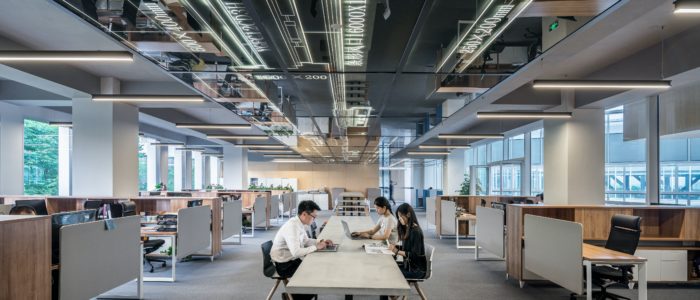
Critics Of Open Plan Offices Shift Their Focus To The Downside Of Virtual Meetings
Why can’t remote work replace the physical workplace altogether? According to an article in the Harvard Business Review cited by workplaceinsight.com,
“…Meetings are important, of course, but not more so than human moments, because it is relationships, not merely acts of collaboration, that create trust between coworkers. Studies have long shown that frequent in-person interactions lead to commitment, support, and cooperation among people on teams. That’s why many tech companies that boast about being 100% online still have an office. Even those that have no physical space emphasize that teams should meet face-to-face on a regular basis…”
Read more at:
https://workplaceinsight.net/well-at-least-nobody-is-whinging-about-open-plan-offices-anymore/

Office Metamorphosis from Physical to Virtual
John Seabrook has written an insightful article, published by the New Yorker, about the paradigm shift from physical offices to remote work and how companies may navigate these unchartered waters in the wake of the pandemic.
The writer poses a thought-provoking set of questions: “What’s an office for? Is it a place for newbies to learn from experienced colleagues? A way for bosses to oversee shirkers? A platform for collaboration? A source of friends and social life? A respite from the family? A reason to leave the house? It turns out that work, which is what the office was supposed to be for, is possible to do from somewhere else”.
In the digital world before the covid shift, the tools that were meant to improve communications in the workplace actually reduced the in person interactions that the open-plan office was supposed to enhance. Now the same tools make it possible to work remotely rather than wasting time online in the office. Surveys cited in the article show that employees actually worked harder from home during lockdown.
Expensive office space in prime markets has become a costly burden. The office has gradually evolved from high-to-low to no workstation panels, culminating in rows of desking systems. That proximity won’t do in the era of the pandemic. Conventional wisdom further evolved during the pandemic, championing the use of antimicrobial materials for high touch locations in the workplace and installation of plexiglass shields and signage promoting social distancing. Finally it became evident that the virus was more likely to spread through HVAC systems than through surface contact and that plexiglass would not slow the spread if the virus is circulating through the ventilation systems.
A VP at Microsoft interviewed by the writer explained that the pandemic is creating a “second digital transformation” by connecting employees’ computers through the cloud wherever they are working. Companies are investing money saved by downsizing physical offices, into cloud-based offices with digital whiteboards and virtual conferencing tools. One of the writer’s ironic conclusions is that the virtual office may eliminate privacy altogether, as every keystroke will be trackable.
Read the full article at:
https://www.newyorker.com/magazine/2021/02/01/has-the-pandemic-transformed-the-office-forever
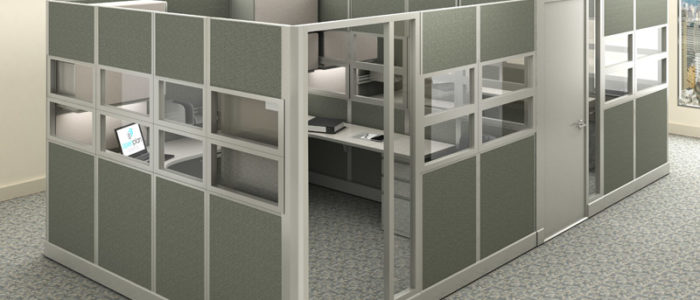
Top Office Furniture Manufacturers Rely On E-Commerce Acquisitions To Stay Relevant Through The Pandemic
The business model for office furniture manufacturers and their contract furniture dealers must evolve as a result of the changing workplace in the wake of the pandemic. Will cubicles with high walls return to the workplace or will the WFH model shift purchasing decisions from facility managers, architects and interior designers to the employees working from home? In the short term, home offices will surely be upgraded to more ergonomic, height-adjustable desks, purchased by employees with reimbursements funded as expenses by their employers. In the long term, we are likely to see a combination of remote workforces operating from home offices, together with downsized office spaces, remodeled with more expensive workstations with high panels and socially distanced layouts, funded as capital equipment expenditures which can be depreciated over time. In the meantime, the manufacturers who had the foresight to acquire established e-commerce channels, will gain a larger share of the market. Rather than considering e-commerce the enemy to the manufacturers’ survival, some companies have bolstered their range through strategic acquisitions such as Kimball International / Poppin.com, Herman Miller / Design Within Reach and Knoll / Fully.com.
Read more about these trends at: https://www.workwhilewalking.com/open-office-layout-covid-19-impact-on-future-design-of-commercial-office-spaces-and-home-office-accommodations
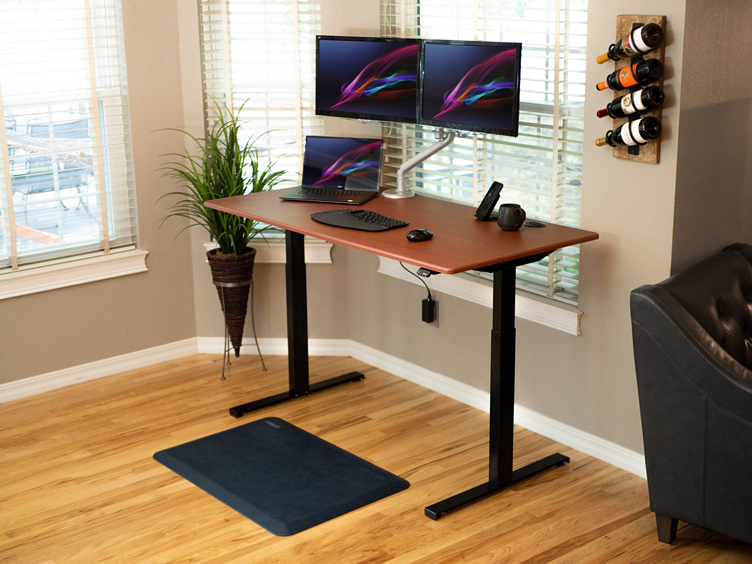

Helicopter Survey of Sheep Spots a Strange Steel Monolith Embedded in Barely Accessible Rock in the Desert
Speculations abound about how the Sci-Fi invoking 12’ monolith was transported and installed in the forbidding terrain. As specialists in transporting equipment to challenging remote locations, we believe that the mysterious 3-sided monolith and the rock cutting equipment had to be transported by helicopter or a purpose-built all-terrain vehicle in order to access the inhospitable terrain.
According to Lt. Nick Street, a spokesman for the Department of Public Safety, the authorities were confident that “it’s somebody’s art installation, or an attempt at that.” As to how it was transported to a remote spot in Red Rock Country, he said, “Somebody took the time to use some type of concrete-cutting tool or something to really dig down, almost in the exact shape of the object, and embed it really well. It’s odd…There are roads close by, but to haul the materials to cut into the rock, and haul the metal, which is taller than 12 feet in sections — to do all that in that remote spot is definitely interesting.”
Read more about this mystery at:
https://www.nytimes.com/2020/11/24/us/Utah-monolith-red-rock-country.html
(Credit: Utah Department of Public Safety)
Alibaba And Amazon Battle For 3PL Supremacy
Alibaba and Amazon are battling to control the third party logistics market by providing supply chain logistics services to outside clients.
Cainiao, the logistics division of Alibaba, is now offering end-to-end logistics services to Japanese and South Korean importers and exporters and have started an air charter service between Asia and South America. While Amazon is well on its way to becoming a global player in providing logistics services to other companies as an extension of the logistics infrastructure they created to serve their own needs, Alibaba understands they must catch up with Amazon’s growing dominance in the field to remain viable.
Cainiao aims to cover international shipping by sea and air, customs clearance, trucking, warehousing and last mile delivery. By offering an in-house turnkey service, they will reduce transit times, take control of their supply chain and reduce costs that will benefit consumers through more competitive pricing and faster delivery times.
Alibaba plans to operate about 1,300 chartered flights by the end of 2020. Amazon is offering a full range of logistics services in Europe and recently opened an air hub in Germany to support its Prime delivery service . In the U.S., Amazon offers ocean freight services for its own imports as well as other customers.
Read more about this transformation at:
https://www.freightwaves.com/news/alibaba-moves-into-japan-with-third-party-logistics-offering

(Photo credit: Alibaba Group)
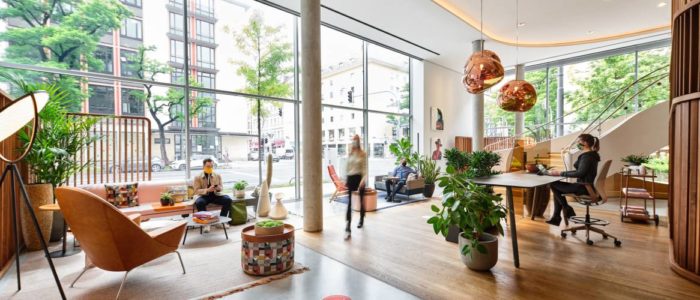
Steelcase Identifies Division, Density And Geometry As Key Elements in Office Reconfiguration
Steelcase has designed their Munich Learning and Innovation Center with screens around and between open plan workstations to create a division between workers facing each other. Density has been reduced by increasing distances between desks and pulling apart seating in collaborative spaces, in order to meet social distancing guidelines. Geometry has been altered by positioning workstations at 90 degree angles to each other.
Learn more about the new design elements Steelcase proposes for a safe return to offices at:
https://www.steelcase.com/eu-en/research/articles/topics/post-covid-workplace/welcome-back/
(Image credit: Steelcase)
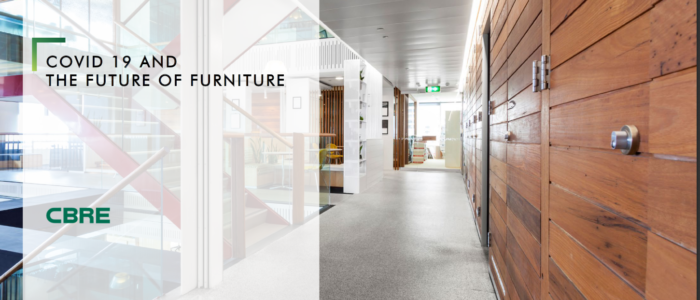
CBRE Publishes Insightful Forecast For The Future Of Office Furniture In The Workplace
CBRE, the largest commercial real estate services company in the world, has published an excellent study of measures required to combat exposure to Covid-19 in the workplace. The study includes detailed graphics explaining how furniture and layouts can be reconfigured in the short, medium and long term.
Read the full report at:
https://irp-cdn.multiscreensite.com/e894f327/files/uploaded/Future%20of%20Furniture%20post%20COVID%2019_CBRE%20Furniture%20Advisory.pdf
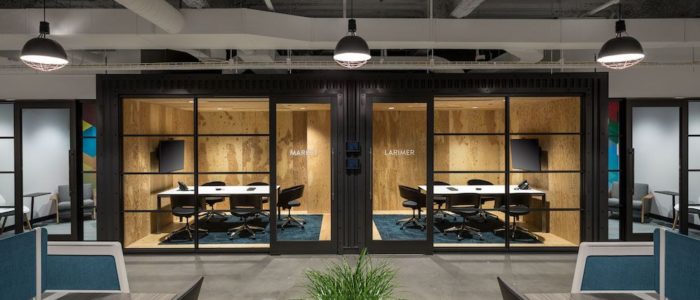
Office Design Likely to Come Full Circle From Private to Open Space and Back To Private Space
The workplace has evolved from an emphasis on private office suites, to open-plan workstations, to free-flowing collaborative open spaces. In the post-pandemic universe, we are likely to see a return to private spaces with micro private offices, larger workstations with barriers to transmission, fewer large conference rooms, elimination of small huddle spaces and a new functional style integrating tech-based solutions with social distancing and enhanced digital interaction.
Read more at:
https://www.workdesign.com/2020/04/what-people-can-expect-from-the-return-to-the-workplace/
(Photo credit: Work Design)





